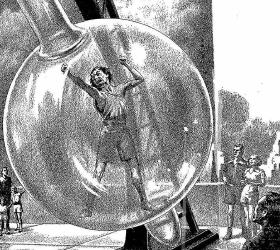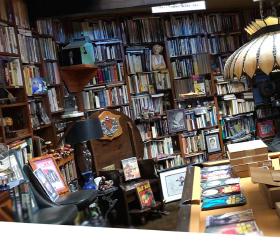Literature
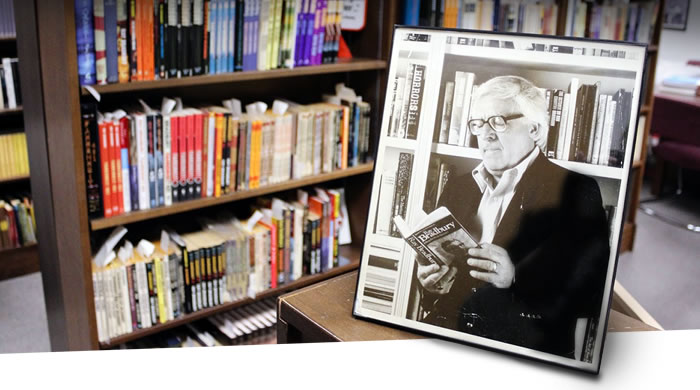
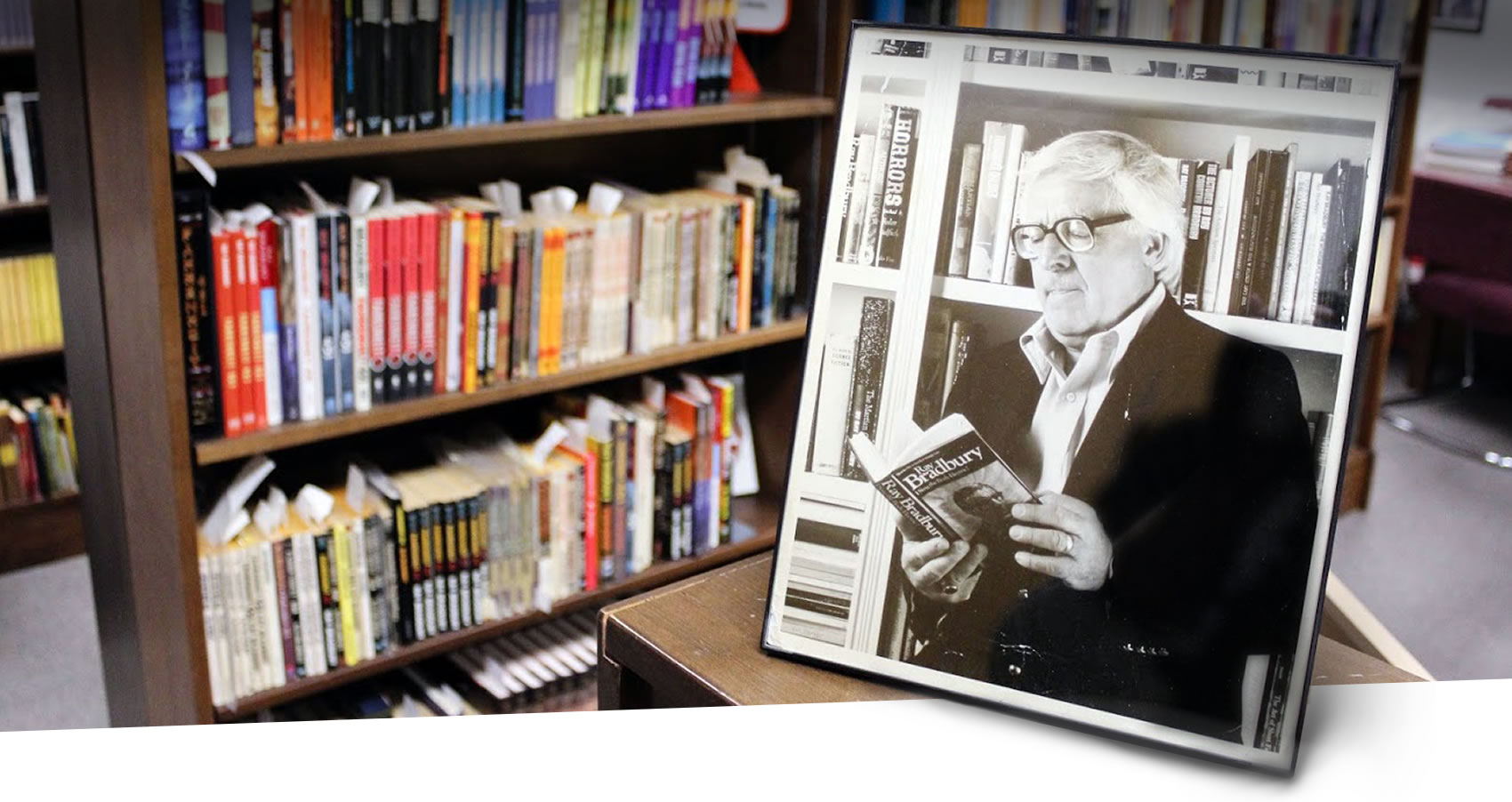
Grand Opening: The Ray Bradbury Library
Although most people don't know it yet, we all have free, unlimited access to one of the largest libraries humanity has ever seen.
We won.
Goddammit, we won!
Our enemies are down on their knees. All the dictators, bureaucrats and tyrants, are already defeated. They are no more. Defeated by guns? No, not by guns. Not by bombs either, but by culture, by the undeniable speed in which culture can now spread.
Do you want to read the collected essays of Bernard Shaw to find out what the author thought on parenting? You can, instantaneously.
Feel curious about French artist Van Gogh? Delight your eyes with a starry night and travel back to 1889 in the blink of an eye.
What if, instead, all you wanted was to listen Edith Piaf sign “non, je ne regrette rien” performing live, in Paris? Or hunt for the white devil with no other than one of the original ardent blasphemous, Captain Ahab?
You can. You can. You absolutely can! Now more than ever.
Goddammit, we won!
Culture is the only hammer strong enough to break the chains of oppression, forever. That which is first attacked by the tyrants. That which those who call themselves religious but have no God see as their outermost enemy when they whisper in the ears of those dumb enough to attempt to govern man.
Culture. Today, found everywhere, even in the palm of our hands.
See, when young author Ray Bradbury took the stairs down into the typing room of the UCLA’s library, back in 1951, all he had in mind was to write a short story. He never thought he would end up calling it “The Fireman”, and through he suspected he could make a sell to one of the pulp magazines that back then were as popular as Netflix and Disney+ are today, he never imagined, by his own account, that the story would end up in the pages of Galaxy Magazine.
Galaxy Magazine! Perhaps one of the most read Science Fiction magazines of the time! Could you imagine that? What’s even more spectacular: “The Fireman” was a chrysalis from which “Fahrenheit 451” emerged, spreading its wings and flying into the imagination of entire generations to come.
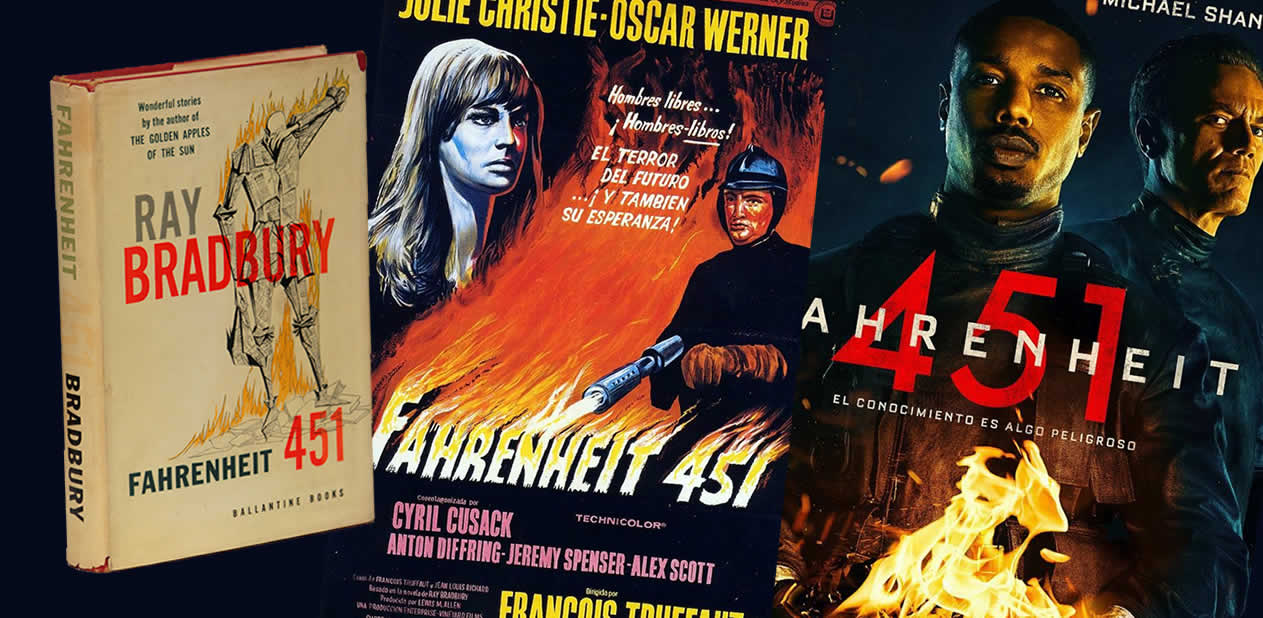 Bradbury's Fahrenheit 451, first edition, next to its two film adaptations.
Bradbury's Fahrenheit 451, first edition, next to its two film adaptations.
The library! That’s where Bradbury wrote his short story! At the basement of the UCLA’s library. His own words: “how could I get writer’s block there? All I had to do was run upstairs, pull out a book and get inspired”. Unknowingly, the author was describing the way the Internet works, long before computers ever existed. Or at least, the way the Internet should work.
Let’s be honest here; year after year the most searched terms on the internet range from either soccer players, to techno-gadgets, movie stars, or explicit content. Only a handful of people seems to be aware of the true power the Internet holds for us. It is the job of the tyrants, of the state bureaucrats, of the dictators of the mind and soul that it stays that way.
No crazy conspiracy theory, only the truth.
And though they have been already long defeated by Gutenberg and his movable type printer, they are still trying to keep us under their boot. Chances are, they will never quit. Which is why it is so important to remind ourselves, from time to time, that WE WON THE BATTLE. That we are, indeed, free.
What better occasion than this essay then to open a library?
Open a library?
Yes, the Ray Bradbury Library. Figuratively speaking, of course. Let this essay titled after the man who wrote about defeating the tyrants from within the sacrosanctness of a library, be a map in which we can, together, rediscover what the Internet has to offer besides funny cat videos and social networks that de-socialize us from one another.
Ready to set sail to uncharted territories? Let us then head towards the Internet Archive, a personal favorite but one many, many are unaware of.
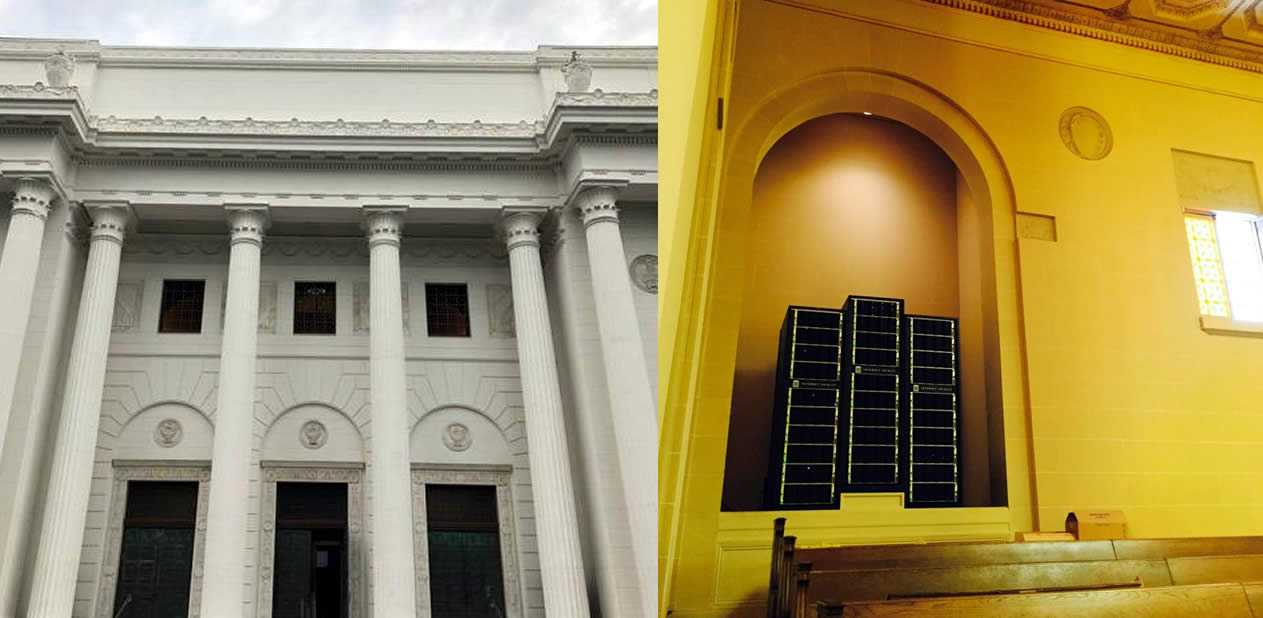 The Internet Archive Building and one of its many servers inside a Church.
The Internet Archive Building and one of its many servers inside a Church.
There has not been a project as important since the conception of the Internet as the Internet Archive. It is even more relevant to mankind than Wikipedia. More, you say? Yes, far, far more relevant.
Erected as a monument to hope in a defunct Christian Science church in San Francisco, the Internet Archive is a digital library with the stated mission of “universal access to all knowledge”.
And what a better place to keep the world’s books safe than a church? Holy ground! From within the virtual corridors of the Internet Archive ANYONE can find actual book scans, original radio segments, journals and everything in within, absolutely free of charge. But let’s drop anchor here and row to those shores, there’s much to see.
Among the vast journals collections, we find the rare “Voynich Manuscript”, dating from a era unknown, though it is suspected to be from the 15th century. This illustrated codex was hand-written, in a language as mysterious as the plants and diagrams that holds.
“A Writer’s Notebook”, by English playwright, novelist, and short story writer W. Somerset Maugham. Published in 1915 and reduced from fifteen volumes to one notebook. This gem is among one of the toughest editions to come across in real life. Digitalized here by the Internet Archive team and free to access for all.
An engineering notebook from one Joe Decuir from back when he worked at Atari, the game company. This notebook includes design concepts on the Atari 400 and 800, as well as on the ANTIC chip, meeting notes, notes on the competition products and other mind-melting bits of history. In fact, there is an entire corridor devoted to Atari’s historical documents at the Internet Archive that range from notebooks, development material to newspaper clippings from those working for Atari at the time.
Also important, the Isaac Newton’s College Notebook, the scanned pages of Leonardo da Vinci’s notebooks by the British Library and Mark Twain’s Notebook, which we wouldn’t be able to find so easily somewhere else.
When it comes to books, we can rejoice our minds with rarities such as the Grammar of Ornament, published in London 1856. Hamonshū, by Mori Yūzan, written in 1917, is a sort of template for woodcarvers of the era.
Also, a selection of great Science Fiction and Horror magazines, such as Selected Science Fiction, Fangoria, Amazing Stories, Psychotronic Video, which was a hand-written and photocopied weekly fanzine on low-budget obscure Science Fiction movies that ran from 1989 to 2006, Interzone, a British Fantasy & Science Fiction Magazine, some issues of Weird Tales, Dime Mystery and True Detective, among many others.
Now that we have covered the basics, let’s not forget about the Popeye Cartoons. Did I just said cartoons? Yes! Because just as with any library, the Internet Archive hosts a vast collection of public domain cartoons, documentaries and educational content, all in video format.
So, follow me down the Cartoon aisle and let’s watch The Lone Ranger, The Pink Panter, Heidi, Girl of the Alps, directed by Isao Takahata with a special collaboration of no other than Hayao Miyazaki. Marvel with me with Out Of The Inkwell, the cartoon that inspired Walt Disney to create an entire empire, and talking of which, let’s also see the world’s first animated cartoon that carried recorded sound instead of a living musician with Walt Disney’s Steamboat Willie.
These are just a few examples of what’s in the Cartoon aisle of the Internet Archive. We also have Paramount Pictures’ Casper, Walter Landz’s Woody Wood Pecker, The Adventures of Pinoccio and pile after pile of Bugs Bunny cartoons you have probably watched a hundred times already and are there, waiting for you to watch them a hundred times more.
But why stop there? We can also stop by the collected images from the Metropolitan Museum to delight ourselves with the full high definition scans of marvels such as the Madonna and Child, an oil painting by the workshop of Giovanni Bellini, c. 1500, a plaque with a erotic scene, from India, 1st Century B.C., the woodblock print of Naruto Whirpool, dating 1853 Japan, a photograph of a real Samurai, taken somewhere around 1865, The Death of the Virgin, the oil painting of Salome with the Head of Saint John the Baptist , a picture of a 1851 Colt revolver, or a 1862 Colt Revolver the police used, if you prefer.
Already trembling with excitement? Then let’s camp out, here, on the shore of our imagination and read some of the great classics from Project Gutenberg such as: Gulliver’s Travels into Several Remote Regions of the World, by Jonathan Swift. This Crowded Earth, by Robert Bloch. Operation Haystack, by Frank Herbert, author of Dune. The War of the Worlds, by H.G. Wells. Perhaps you want to spend a while visiting the strange sightings at the Island of Doctor Moreau by the same author, or go back in time with me by using The Time Machine.
Our options are limitlessness as we are only scratching the surface of what we can find. Maybe spend some time reading the illustrated version of Kidnapped, by Robert Louis Stevenson, author of Treasure Island? Or read his Essays of Travel, either case, you decide.
I began this essay describing how Ray Bradbury went on writing his short story, “The Fireman”, which later metamorphosed beautifully into “Fahrenheit 451” and I will end with with two gifts for you to take with you.
One, the first issue of Futuria Fantasia, Ray’s own Science Fiction magazine, which ran just for a few numbers but included stories from Ray Bradbury and cover illustrations by Hannes Bok, who would later would on to illustrate Bradbury’s book Something Wicked This Way Comes, immortalized into film by Walt Disney in ……, besides becoming one of the most celebrated illustrators of the pulp era.
This particular issue of Futuria Fantasia, the second one dating 1939, has a poem by Henry Hasse, with whom Bradbury would collaborate to publish his first story which we have featured here, on the Free Bundle, called: The Pendulum.
The second gift comes wrapped with a promise: the Ray Bradbury Library will be a reality, one day. I lay this essay as a mason lays the first stone before a long and tedious construction, and I will see it reaches completion. The gift, then, to you and everyone else who dares to accept it, is this.
May this journey mark the beginning of some of the most beautiful and magical experiences of your life! Now let’s head inland and see what the realms of imagination have in store for us!


